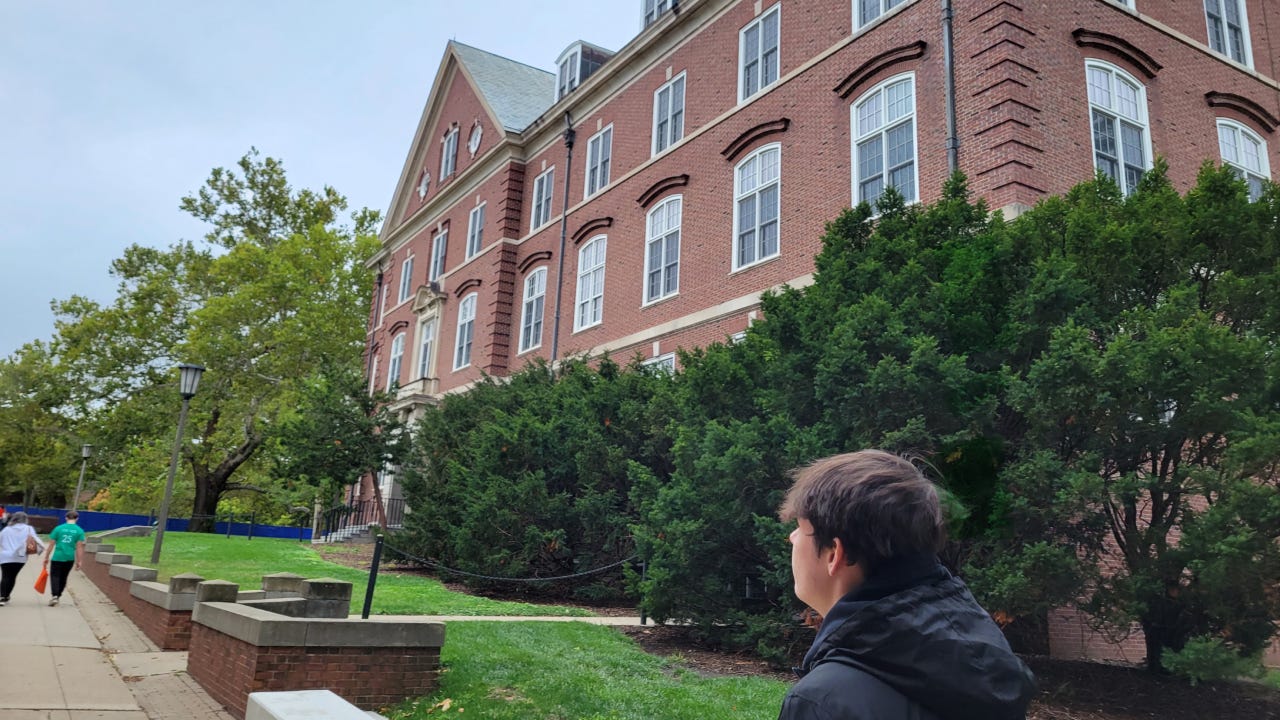Federal student loan rates just hit their highest point in over a decade. What borrowers should know

The U.S. Department of Education’s newly announced federal student loan interest rates for the 2024-25 academic year broke longstanding records. Experts and policymakers alike predicted a jump because borrowing and lending costs are currently high in general.
“These interest rates are high compared with the recent low interest rates, but are actually close to the long-term historical average interest rates,” says Mark Kantrowitz, a leading student loans expert. However, he adds that federal Direct undergraduate, graduate and PLUS loans’ rates will be the highest they’ve been in 16, 24 and 33 years, respectively.
Following an exceptionally large drop during 2020, federal student loan rates have steadily been rising by roughly one percent — or just under — each year. The Education Department announced on Tuesday that 2024-25 rates will increase by 1.03 percent.
However, only federal Direct and PLUS loans taken out for the 2024-25 academic year will be impacted by the new rates. Federal student loan rates are fixed, so existing loans’ rates won’t change.
Both undergraduate and graduate loan rates rise
Today’s announcement only applies to federal loans first disbursed on or after July 1, 2023, and before July 1, 2024. Federal Direct undergraduate loans for the next school year will have a 6.53 percent rate.
Graduate and PLUS loans are rising to heights not seen in over 20 years. Federal Direct graduate loans, which now have a 7.05 percent rate, will come with a rate of 8.08 percent. PLUS loans will carry the highest rates charged in 33 years, shifting up to an interest rate of 9.08 percent from last year’s 8.05 percent.
Why are student loan rates so high?
Each year, Congress sets the interest rates for the next academic year. These rates apply from July 1 to June 30 of the following year — in this case, July 1, 2024 through June 30, 2025.
Federal loan rates are set according to the high yield of the 10-year Treasury note auction in May, plus a percentage. When the federal funds rate is high, these yields tend to climb as well.
The federal funds rate, set by the Federal Reserve, is up as the Fed works to cool stubbornly high inflation. This impacts borrowing rates across credit products, from car loans to student loans.
“We are living in an era of relatively high interest rates, generally speaking,” says Mark Hamrick, Bankrate Senior Economist and Washington Bureau Chief. “There really isn’t anywhere to hide relative to high borrowing rates and education loans aren’t any different.”
Economic turbulence to blame for high borrowing costs
Federal student loan rates have been rebounding since 2020’s big drop. From 2021 to 2025 alone, undergraduate Direct Loans have increased nearly 3 percent.
Student loan rates from 2020-2025
| Year | Undergraduate Direct Loan | Graduate Direct Loan | PLUS Loans |
|---|---|---|---|
| 2020-2021 | 2.75% | 4.30% | 5.30% |
| 2021-2022 | 3.73% | 5.28% | 6.28% |
| 2022-2023 | 4.99% | 6.54% | 7.54% |
| 2023-2024 | 5.50% | 7.05% | 8.05% |
| 2024-2025 | 6.53% | 8.08% | 9.08% |
Source: Federal Student Aid
The federal funds rate isn’t the only factor controlling federal student loan rates, says Hamrick. Multiple factors impact rates, like economic growth, inflation and monetary policy. “Like ocean currents, these things tend to influence one another,” he explains.
Will student loan interest rates rise again next year?
At the beginning of the year, the Fed signaled rates would start to decrease in 2024. However, that sentiment is now in question as inflation remains above the Fed’s target rate of 2 percent.
Most recently, during its April 30-May 1 meeting, the Federal Reserve announced that it will continue to hold interest rates steady. This is the seventh Fed meeting in a row at which it elected to do so, keeping rates at a 23-year high.
“The outlook is less certain,” Hamrick says when asked if next year’s rates will continue to rise. “The best bet right now is that rates remain higher for longer, but they could be in the process of peaking.”
Students should apply for federal aid despite rising costs
Borrowers should still prioritize federal student loans. For many borrowers, these loans have lower rates than private loans. Plus, they come with access to income-driven repayment plans.
With rates this high, it could be worth looking at private student loans as well. Private student loan rates range between four percent and nearly 17 percent. That said, only borrowers with excellent credit, a low debt-to-income ratio and a strong, stable income will likely enjoy the lowest available rates.
With the cost of higher education on the rise, students should borrow up to the maximum limit with federal loans and then consult their school’s financial aid office for potential scholarships or aid opportunities. Only then is it wise to turn to private loans to fill in the funding gaps, especially if your credit score is fair or poor.
Why we ask for feedback Your feedback helps us improve our content and services. It takes less than a minute to complete.
Your responses are anonymous and will only be used for improving our website.
You may also like

The ultimate guide to federal student loans





